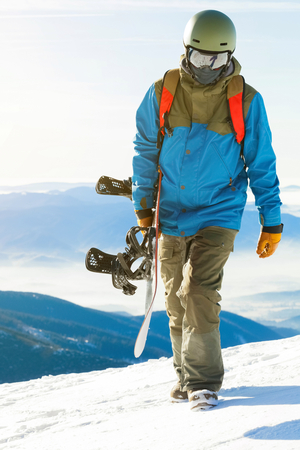1. Introduction: Braving the Winter Wilds of the Peaks
If you crave adventure with a bracing edge, winter walking in the Peak District is a test of both grit and wonder. As frost clings to the heather and icy winds sweep across rugged escarpments, these hills transform into a realm where nature’s raw power is felt in every breath. Here, winter isn’t just a season—it’s an invitation. The Peak District, heartland of British hiking heritage, lures locals and travellers alike with its stark beauty and untamed spirit. There’s a magnetic pull to those snow-dusted ridges and frosted valleys; it whispers of challenge, solitude, and that unmistakable thrill only found on an exposed moor beneath a steel-grey sky. In the depths of winter, the Peaks reveal their wildest face—demanding respect, promising adventure, and rewarding those who brave them with moments of pure, windswept awe.
2. Essential Prep: Gear, Grub, and Getting There the British Way
Embarking on a winter walking adventure in the Peak District is no Sunday stroll—this is an expedition that demands grit, wit, and a healthy respect for the elements. Before you set boot to frostbitten trail, proper preparation is your ticket to both safety and story-worthy memories. From kit lists inspired by local hill-walkers to travel hacks straight out of a Derbyshire pub, here’s how to do it right—the British way.
Critical Kit: What Every Winter Rambler Needs
| Essential Item | Why You Need It | Top Local Tip |
|---|---|---|
| Waterproof Boots | Muddy moorlands and icy paths are unforgiving on feet. | Opt for sturdy leather or Gore-Tex—locals swear by them. |
| Layered Clothing | The weather flips faster than you can say “frosty.” | Merino base, fleece mid-layer, and a windproof outer shell. |
| Ordnance Survey Map & Compass | Mobile signal can vanish in a blink on the high fells. | The classic OS Explorer OL1 or OL24 covers most routes. |
| Headtorch (with Spare Batteries) | Dusk falls early and fog rolls in unexpectedly. | Check batteries before setting off; locals never forget this one. |
| Gloves & Woolly Hat | Extremities freeze first in Peak windchill. | A flat cap may look dapper but won’t cut it up Kinder Scout. |
| First Aid Kit & Emergency Bivvy Bag | Tumbles are part of the adventure—be ready for them. | Add extra plasters; gritstone bites harder than it looks. |
| Flask of Tea (or Coffee) | No British walk is complete without a warming brew halfway round. | Earl Grey or builder’s tea—fill your flask before leaving the house! |
Warming Nosh: Fuel for Frosty Footpaths
Packed sandwiches may be standard fare, but winter wandering calls for heartier sustenance. Locals swear by sausage rolls, pork pies, or a slab of fruit cake tucked in the rucksack. And don’t underestimate the morale-boosting power of a chocolate bar when the mist descends on Mam Tor. If you’re going full British, stop at a village bakery en route for proper grub—or plan your route past a stone-walled pub for a post-hike pie and pint.
Travel Logistics: Getting There and Around Like a Local
The Peak District is best reached by train or bus—classic British reliability means services run even when snow dusts the hills. Sheffield, Manchester, and Derby are excellent jumping-off points. For more remote start points (Edale, Hope, Hathersage), National Rail lines thread through valleys like lifelines. Remember: car parks fill early on clear days, so public transport isn’t just eco-friendly—it’s often less hassle too. Always check weather warnings and rail updates before setting off; if in doubt, locals consult the Met Office rather than trust their phone app alone.
Classic British Essentials Checklist
| Item | Cultural Note |
|---|---|
| Kendal Mint Cake | An old-school energy fix beloved by generations of walkers. |
| Flask of Tea | A British hiker’s holy grail—never leave home without it. |
| Wool Socks | Your best defence against sodden toes after bog-hopping adventures. |
| Tweed or Waterproof Cap | Keeps rain out of your eyes with style worthy of Beatrix Potter’s countryside heroes. |
The Adventure Begins Before You Step Outside…
If you want to walk like a true Brit this winter, preparation isn’t just about surviving—it’s about thriving in wild weather with stories to tell afterwards. So lace up your boots, pack your flask, and arm yourself with local wisdom—the Peak District awaits those bold enough to embrace its frosty embrace.

3. Top Safe Trails: Legendary Routes for Winter Ramblers
If you’re craving a proper British winter adventure, the Peak District is stacked with walking routes that deliver on both drama and safety. Whether you fancy a gentle family stroll or a wind-battered ridge walk worthy of any explorer, these legendary paths capture the heart of Derbyshire’s wild beauty while keeping hazards in check. Here are some of the most beloved and reliable trails to stomp this season.
Kinder Scout: The Crown Jewel of Gritstone
No list is complete without Kinder Scout, the highest point in the Peaks and infamous for its role in Britain’s right-to-roam history. The classic circuit from Edale up Jacob’s Ladder offers panoramic views over snow-dusted moorland and dramatic escarpments. In winter, stick to the well-trodden Pennine Way to avoid boggy mishaps. On crisp mornings, frost clings to the heather and the air feels charged with possibility – just the sort of challenge every hardy rambler relishes.
Mam Tor: The Shivering Shivering Mountain
Mam Tor earns its name (“Mother Hill”) thanks to landslips that have shaped its slopes over millennia. The short but exhilarating ridge walk from Castleton up to Mam Tor’s summit is perfect for those wanting big views without heroic effort. The stone-paved path is easy to follow even when Jack Frost has been out overnight, and you’ll be rewarded by sweeping vistas towards Edale and Hope Valley. For families or newcomers to winter walking, it’s an ideal introduction to Peak District magic.
Chatsworth Estate: Stately Ambles Among Frosty Firs
For a more genteel adventure with a thoroughly British twist, wander through Chatsworth Estate. With grand parkland, winding woodland trails, and glimpses of Chatsworth House itself rising above misty fields, this route combines history with scenery. Paths here are well maintained, making it a top pick for wintry rambles with younger walkers or those who fancy a picnic stop (thermos of tea essential, naturally). Keep an eye out for herds of deer ghosting across the frosted grass.
Bonus Local Favourite: Dovedale’s Stepping Stones
Dovedale is renowned for its limestone gorge and picturesque stepping stones spanning the River Dove. Even in winter, the valley remains sheltered and inviting. Wrap up warm and tread carefully – crossing those famous stones with a dusting of frost will certainly get your pulse racing! It’s an iconic slice of English countryside where legend meets adventure.
Top Tip:
Always check local weather forecasts before setting off and come prepared with proper boots and layers – British weather loves throwing surprises at intrepid souls!
4. Weathering the Storm: Navigating British Winter Hazards
Setting out for a winter walk in the Peak District isn’t just about crisp views and frosty landscapes—it’s an exercise in navigating the moody, ever-changing British elements. The Peaks are notorious for their sudden weather shifts, making local know-how crucial for a safe and exhilarating adventure.
Classic UK Winter Challenges
The three classic culprits that catch even seasoned walkers off-guard are sudden fogs, muddy stile crossings, and surprise cold snaps. Each demands both respect and preparation. Here’s how to tackle them like a true Peak District explorer:
| Hazard | What to Expect | Local Tricks & Tips |
|---|---|---|
| Sudden Fogs | Visibility can drop from panoramic to pea soup within minutes. | Carry a map and compass (don’t rely on GPS alone); learn to identify dry-stone walls and sheepfolds as reliable waypoints; if lost, stay put until visibility improves. |
| Muddy Stile Crossings | Popular footpaths turn slick with mud, especially near stiles and gates. | Wear grippy boots; use trekking poles for balance; cross stiles sideways for better stability; tap stiles with your boot first—sometimes they’re icier than they look! |
| Surprise Cold Snaps | A blue sky morning can shift to bone-chilling wind in hours. | Dress in layers; pack an emergency foil blanket; stop regularly to check extremities for numbness; keep hot tea in a flask for quick warmth. |
Reading the Peaks: Local Weather Wisdom
The Peaks have their own microclimate quirks. Seasoned walkers swear by “reading” the land: watch how clouds gather above Kinder Scout—if they thicken rapidly, expect rain or fog within the hour. Sheep clustering together? That’s often nature’s early warning of dropping temperatures or oncoming snow. Always check the local Mountain Weather Information Service before heading out, but be prepared to trust your senses too.
Unique Hazards of the Peak District
- Peat bogs freeze deceptively hard—test ground with your pole before stepping.
- Limestone escarpments become treacherously slick after frost—choose alternate routes if unsure.
- The famous “horizontal rain” can soak you fast; waterproof everything, especially maps and phones!
Your Adventure Edge
Tackling winter hazards in the Peak District is part of what makes each journey legendary. Arm yourself with local tricks, respect the landscape’s moods, and you’ll earn not only epic views but also tales worth retelling at any Derbyshire pub fireplace.
Pit Stops and Pubs: Cosy Retreats After Bold Treks
After braving the frostbitten trails and windswept moors of the Peak District, there’s nothing quite as rewarding as ducking into a warm haven for a well-earned rest. The region is dotted with timeworn pubs, snug tea rooms, and hidden village nooks—each offering sanctuary for winter wanderers seeking to thaw out, refuel, and relive the day’s adventures.
The Rambler’s Reward: Legendary Peak District Pubs
No winter walk is complete without a stop at one of the area’s legendary inns. The Old Nags Head in Edale stands at the start of the Pennine Way and is famed for its roaring fireplaces, real ales, and hearty pies—the ultimate fuel after a frosty stomp. Down in Hathersage, The Plough Inn welcomes muddy boots and weary limbs with home-cooked fare and local brews. For those conquering the rugged paths near Castleton, The Cheshire Cheese Inn serves up rustic charm alongside warming stews and thick-cut chips.
Tea Rooms: Sweet Comforts in Stone Villages
If your soul craves scones more than stout, the Peak District’s tea rooms are second to none. The Village Green Café in Eyam offers not only shelter from biting winds but also towering cakes and cream teas that will revive even the most footsore ramblers. Over in Bakewell, Ashford Tea Room tempts visitors with its legendary Bakewell pudding—a must-try reward for any winter adventurer.
Hidden Hideaways: Fireside Stories & Local Lore
Seek out lesser-known retreats like The Bulls Head in Foolow or The Samuel Fox Country Inn in Bradwell, where stone walls enclose glowing hearths and the locals are quick to share tales of snowy exploits on Kinder Scout or Mam Tor. These village gems turn every pit stop into an adventure of its own—inviting you to swap stories over steaming mugs or a dram of whisky while the wind howls outside.
Whether you’re drying off by the fire or plotting tomorrow’s route over pints with fellow explorers, these cosy retreats transform each bold trek into an epic winter tale—one best shared over good food, strong drink, and laughter echoing through ancient beams.
6. Leave No Trace: Respecting the Land and Local Life
To truly embrace winter walking in the Peak District, it’s not just about conquering ridges or ticking off trails—its about cherishing the landscape and upholding the revered British tradition of rambling with respect. The Peak District isn’t merely a playground for adventurers; it’s a living patchwork of ancient moorland, working farms, and timeworn villages. Here’s how you can walk boldly yet leave no trace behind.
The Code of the Countryside
Sticking to footpaths is more than a courtesy—it protects fragile flora and minimises erosion on waterlogged winter ground. Always close gates behind you, even if you found them open. If you encounter livestock, pass quietly and keep dogs under tight control. This isn’t just etiquette; it’s essential for local livelihoods.
Wildlife Watch
The haunting cry of a curlew or glimpse of a red deer is part of what makes the Peaks magical in winter. Disturb wildlife as little as possible—don’t stray into nesting areas or linger near animal shelters. The silence you maintain is an act of stewardship.
Village Tranquillity
The stone villages that dot the valleys are homes, not museums. Park only in designated areas, keep noise down, and resist the urge to peer through cottage windows! Support local shops and pubs, but leave muddy boots at the door.
Take Only Memories
It might be tempting to pocket a pretty pebble or wildflower as a trophy from your adventure, but true ramblers know: take only photos, leave only footprints. Pack out all litter—yes, even orange peel decomposes slowly in winter chill—and if you see rubbish left by others, be the one who picks it up.
Embodying the British Rambling Spirit
Walking in the Peaks during winter is an extreme adventure of its own kind—a test not just of endurance against wind and frost, but of respect for land shaped by centuries of human and natural history. Every step should echo the unwritten code: enjoy with awe, tread lightly, and leave no sign you were ever there. That’s what it means to be part of Britain’s long lineage of walkers.


